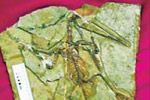Health
IN BRIEF:Health
Updated: 2010-12-08 09:45
(China Daily)
Best to limit salt after heart failure
People who've experienced heart failure and eat a high-salt diet are more likely to end up in the hospital, a new study finds.
"High salt intake is particularly dangerous for heart failure patients, even for those who are doing well and are stable on their medications," says author Dr Gary E. Newton of Mount Sinai Hospital in Ontario.
In the study, people who ate an average of 3.8 g of sodium per day - equivalent to nearly two teaspoons of salt, and more than twice the maximum recommended by the American Heart Association for healthy people - were twice as likely to be hospitalized for heart failure within a three-year window as people who ate fewer salty foods.
Health experts generally suggest that people limit their salt intake, but the scientific evidence to support that recommendation for people with heart failure is generally "scant", Newton says.
To investigate what effect a saltier diet might have on heart failure, Newton and his team followed 123 people with stable heart failure, the final stage of cardiovascular disease marked by shortness of breath, fatigue and swelling.
A small percentage of people with heart failure die each year, Newton explains, but many take medication and live with the condition, at which point it becomes chronic.
Rather than hiding the salt shaker - which would be largely "ineffectual" - people should check the labels of every food product they buy, Newton says, since salt can sneak in everywhere from vegetable drinks to bread. Cooking more at home, and avoiding cheap restaurants, is another good step, the researcher adds.
Tuberculosis explained
Certain stem cells protect tuberculosis (TB) bacteria from being destroyed, which explains why TB can lie dormant for years or even decades in the human body, researchers say.
The human immune system produces T-cells that can kill TB, but the body also deploys mesenchymal stem cells (MSC) to sites of TB infection, researchers say in a paper published in the Proceedings of the National Academy of Sciences.
"MSC are recruited to the sites of infection. What happens is these stem cells make a barrier ... between the T-cells that are supposed to kill the bacteria, and the bacteria," says Gobardhan Das, staff scientist at the International Center for Genetic Engineering and Biology in New Delhi.
"MSC produce nitric oxide that kill bacteria, but the amount is not sufficient to kill the TB bacteria, it just keeps them in check," Das says. "Nitric oxide also inactivates T-cells. So the presence of MSC inhibits the proliferation of the bacteria and T-cells, and there is an equilibrium established. That's why the incubation is very very long and can maintain for an entire lifetime."
Nearly all TB infections are latent, with carriers showing no symptoms and they are not infectious. One in 10 will become sick with active TB in their lifetime, primarily as a result of a weakened immune system.
Das and colleagues appealed for more research to be aimed at fighting this function of MSC.
"MSC create a suppressive microenvironment ... they are almost like a nest. If they (TB bacteria) don't have a nest, they will be exposed to our regular immune system and will be killed by our immune system," Das adds.
Kick off your shoes to beat stress
Walking barefoot is the most natural and effective foot reflex therapy available.
"Putting the soles of your feet in contact with all the normal sensations helps to relieve internal tension and reduce stress," says Dieter Breithecker, head of Germany's Federal Institute for Posture and Mobilisation Support.
"Shoes, on the other hand, prevent direct contact with the ground and so adversely affect the health of our feet, our balance and posture."
It is worthwhile at least at home, in the garden or unpolluted green spaces, to do without shoes while walks on sandy or pebble beaches are considered perfect.
"The unevenness of the surface underfoot has to be compensated reflexively by complicated muscle work," Breithecker explains. "This strengthens the metatarsal arch and leads to a sustainable and healthy posture."
At the same time, walking barefoot also trains the blood vessels. Breithecker recommends the therapy for people suffering from varicose veins in their legs.
"Wet stones and damp meadows caused by the autumnal morning dew are especially beneficial," he says. "The coldness stimulates the circulation, strengthens the immune system and encourages organ function."
DPA - Reuters
Specials

President Hu visits the US
President Hu Jintao is on a state visit to the US from Jan 18 to 21.

Ancient life
The discovery of the fossile of a female pterosaur nicknamed as Mrs T and her un-laid egg are shedding new light on ancient mysteries.

Economic Figures
China's GDP growth jumped 10.3 percent year-on-year in 2010, boosted by a faster-than-expected 9.8 percent expansion in the fourth quarter.